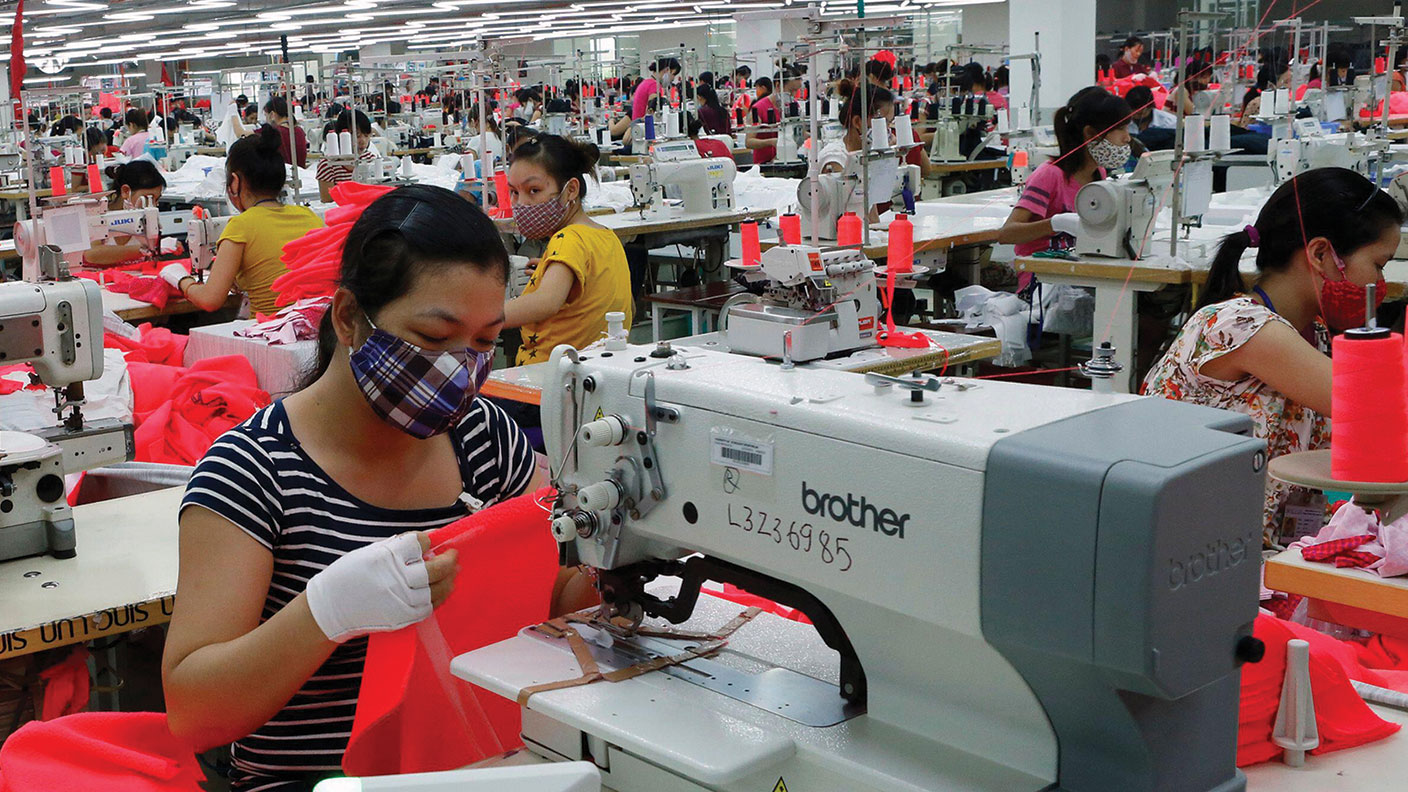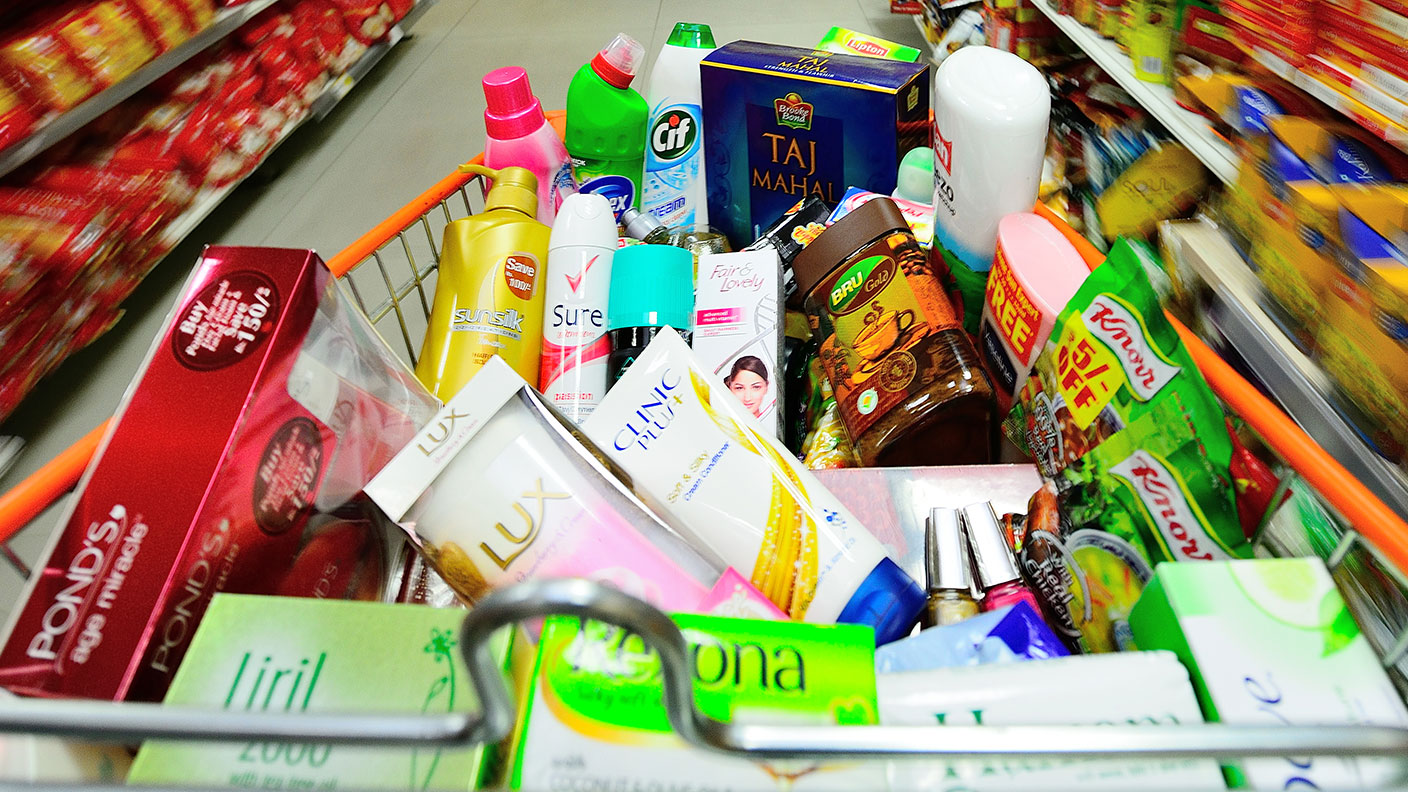R&D: the key to long-term sales and profit growth
Companies that spend heavily on research and development (R&D) greatly improve their long-term odds. Dr Mike Tubbs explains what to look out for – and what to buy now.


Companies that spend heavily on research and development (R&D) greatly improve their long-term odds. Dr Mike Tubbs explains what to look out for and what to buy now.
The holy grail for investors is a company that can keep expanding sales and earnings for years on end. A crucial driver of long-term growth is research and development (R&D), which determines how many new and improved products and services a company can come up with and how fast to maintain or enhance its competitive edge. R&D can give sales, profits and share prices an especially big boost if it leads to the creation of a ground-breaking and wildly popular offering; think what the iPhone did for Apple, or the Walkman for Sony.
Fortunately, there is a handy tool for investors to help them identify the companies that should be able to develop and refine their offerings and keep ahead of the game: the annual EU Industrial R&D Investment Scoreboard. The latest one was published a few days before Christmas. The scoreboard records and analyses the R&D and business performance of the top 2,500 R&D companies from all regions of the world, each of which invested at least €25m in R&D in the 2017/2018 financial year. Together these firms comprise 90% of global industry-funded R&D.
MoneyWeek
Subscribe to MoneyWeek today and get your first six magazine issues absolutely FREE

Sign up to Money Morning
Don't miss the latest investment and personal finances news, market analysis, plus money-saving tips with our free twice-daily newsletter
Don't miss the latest investment and personal finances news, market analysis, plus money-saving tips with our free twice-daily newsletter
There are three main areas where the scoreboard's findings are of interest to investors. These are the ranking of top R&D investors, along with any big changes in that ranking over time; which sectors and regions of the global economy most R&D takes place in; and the companies combining high R&D intensity (the ratio of R&D to sales, which shows how important R&D is as a growth driver) with strong sales increases.
We will look at each of these areas in turn, starting with the top R&D investors. Each year's scoreboard lists the top 50 investors by total R&D and their rank changes. The top ten from the 2018 top 50 are shown in the table below.
The biggest spenders on research
All but one of the ten carmaker Volkswagen are from the high-tech industries of biopharma, software, or technology hardware.Within the top 50 firms there are six that have risen over 200 places in the rankings since 2004. These are Alphabet, Amazon and Facebook from the software sector, Huawei from technology hardware and Celgene and Gilead Sciences from biotechnology.
| Top-ten companies by R&D in 2017/2018 | |
| Samsung | €13.4bn |
| Alphabet | €13.4bn |
| Amazon | €13.1bn |
| Volkswagen | €13.1bn |
| Microsoft | €12.3bn |
| Huawei | €11.3bn |
| Intel | €10.9bn |
| Apple | €9.7bn |
| Roche | €8.9bn |
| Johnson & Johnson | €8.8bn |
It is those three sectors that have been major growth areas in the 21st century and where many growth investors have identified successful companies that have proved to be excellent long-term investments. There are also companies that have fallen in the rankings or dropped out of the top 50 altogether. The 2004 top 50, for instance, included Canon, Hewlett Packard, Philips and Toshiba.
The countries and regions that invest the most
The major world regions have rather different sector specialisms when it comes to R&D. Worldwide R&D growth in 2017/2018 was spearheaded by the information and communications technology (ICT) sector, followed by health. The US has 51.4% of its R&D in ICT but only 7.8% in the car industry, compared with the EU and Japan with only 20.1% and 24.9% respectively in ICT, but 30.5% and 30.8% in the automotive sector.In the broad health sector (health, biotech, pharma), the US has 26.7%, the EU 22.4%, Japan 12.4%, and China only 3.4%. Given that the US accounts for 37% of the R&D of the top 2,500 companies, any investor seeking exposure to ICT needs to include US companies with perhaps a few from China, such as Tencent. In health, Europe and the US are the places to look.
"R&D can lead to the creation of a ground-breaking product such as the iPhone"
The UK does well within the EU, accounting for a large proportion of companies closely involved with R&D. The top 1,000 EU companies with R&D over €8m include 275 from the UK, compared with 219 from Germany and 111 from France; the largest three countries of the 28 in the EU thus account for over 60% of these 1,000 companies. In software, there are 109 EU companies in the top 1,000, of which 48 are from the UK; in technology hardware 11 of 43 EU firms are British and in biopharmaceuticals almost a third are. The UK is therefore strong in these high-tech sectors. As far as R&D intensity is concerned, biopharma, software and tech hardware have the highest average scores. The top-50 companies who spend over €1bn on R&D have intensity scores greater than 13%: they spend at least this proportion of their sales on research.
The US has 25 of these, Europe 16 and Asia nine. The scoreboard's top ten by R&D intensity include Bristol Myers-Squibb, Merck, and AstraZeneca from the biopharma industry, Taiwanese semiconductor group MediaTek and its US counterpart Qualcomm from tech hardware, and Chinese travel software producer Ctrip.com International. The top ten all spend between 24% and 30% of sales on R&D.
Who are the most effective innovators?
However, while R&D intensity is important, so is whether it is being put to good use and driving sales growth. So the next step is to identify companies with the combination of high intensity and high growth. The top 250 by R&D in the 2018 scoreboard include all the firms with R&D of more than €500m.
From these, we select those with both R&D intensity, R&D growth, and sales growth of more than 10%. There are just 31 such companies, and 23 are American. All but three are from the three high-tech sectors of software, hardware and biopharma.While growth from one year to the next is creditable, growth maintained over several years is far more impressive since it implies sustainable expansion.
The table below therefore shows those companies from the top 250 that had R&D intensity and sales growth in double figures not only in the 2018 scoreboard but also in the 2017 and 2016 editions too. As an added precaution, all also boast double-digit R&D growth in the past three years. There are a mere eight companies that fit the bill. Since the scoreboard data was collected, Huawei has suffered from many Western governments banning its products from core telecom networks amid concerns over Chinese cyberspying. This is likely to reduce its growth rate.
| Company | Sector | R&D intensity 2017/18 | Sales growth 2017/18 |
| Alphabet | Software | 14.5% | 22.8% |
| Amazon | Retail/Software | 12.7% | 30.8% |
| Broadcom | Tech. hardware | 18.7% | 33.2% |
| Software | 19.1% | 47.1% | |
| Huawei | Tech. hardware | 14.7% | 15.7% |
| Lam Research | Tech. hardware | 10.7% | 38.2% |
| Salesforce.com | Software | 14.9% | 24.9% |
| Tesla | Automotive | 11.7% | 68.0% |
Using R&D to guide investment
R&D is a useful addition to other more conventional criteria when selecting a portfolio of growth companies. Ideally, an investor would like to identify stocks with a strong position in their global sector and sustainable profitable growth. A record of profitable growth over recent years is one useful indicator and another is a "wide moat" an entrenched competitive advantage that means competitors find it difficult to enter the company's market or to compete with it effectively if they do. Examples are patents or a strong brand, such as Google, which is so strong in fact that its name gets used as a verb, and it looks set to dominate internet searches for years to come.
What to buy now
Put this all together and we are left with several names that merit consideration for your portfolio, starting with Alphabet (Nasdaq: GOOGL), Amazon (Nasdaq: AMZN) and the cloud-computing and software specialists Salesforce.com (NYSE: CRM). These three have very strong positions in their sub-sectors, wide moats, promising prospects and look very low risk.
Consider also pharma giants Johnson & Johnson (NYSE: JNJ) and Merck (NYSE: MRK). Finally, I would add my long-standing favourites Renishaw (LSE: RSW), a world leader in precision metrology and ASML (Amsterdam: ASML), the Dutch group specialising in precision lithography, a key step in making semiconductor chips.
These are smaller companies: ASML's R&D spending is just over €1bn and its R&D intensity is 12.8%; its sales growth is an even more impressive 33.2%. Renishaw's R&D intensity is 12%, more than double its sector average.
For investors who do not wish to choose individual stocks, there are some investment trusts that have portfolios with substantial proportions of rapidly growing R&D-intensive companies. A good example is Scottish Mortgage Investment Trust (LSE: SMT). Its top five holdings account for 35% of its portfolio and are Amazon (9.3% of the total), US biotech Illumina (8.2%), Tesla (6.6%), and Chinese internet players Alibaba (5.6%) and Tencent (5.3%). Scottish Mortgage's price performance over five years averages 19.7% growth per year (and an annual 23.8% over ten years).
Get the latest financial news, insights and expert analysis from our award-winning MoneyWeek team, to help you understand what really matters when it comes to your finances.
Highly qualified (BSc PhD CPhys FInstP MIoD) expert in R&D management, business improvement and investment analysis, Dr Mike Tubbs worked for decades on the 'inside' of corporate giants such as Xerox, Battelle and Lucas. Working in the research and development departments, he learnt what became the key to his investing; knowledge which gave him a unique perspective on the stock markets.
Dr Tubbs went on to create the R&D Scorecard which was presented annually to the Department of Trade & Industry and the European Commission. It was a guide for European businesses on how to improve prospects using correctly applied research and development.
He has been a contributor to MoneyWeek for many years, with a particular focus on R&D-driven growth companies.
-
 The steady rise of stablecoins
The steady rise of stablecoinsInnovations in cryptocurrency have created stablecoins, a new form of money. Trump is an enthusiastic supporter, but its benefits are not yet clear
-
 SRT Marine Systems: A leader in marine technology
SRT Marine Systems: A leader in marine technologySRT Marine Systems is thriving and has a bulging order book, says Dr Michael Tubbs
-
 Most popular stocks of 2023: AI on the up while interest in Netflix plummets
Most popular stocks of 2023: AI on the up while interest in Netflix plummetsWe reveal the most popular shares of 2023 so far.
-
 Vietnam makes its mark on the global stage
Vietnam makes its mark on the global stageNews Electronics manufacturers are moving into Vietnam, partly in response to manufacturing delays caused by lockdowns in China. The country’s textile industry is booming, too.
-
 The easy way to invest in emerging markets
The easy way to invest in emerging marketsTips Investing in developing countries isn’t as straightforward as fund managers like to tell us, says Jonathan Compton. Here's how to do it the easy way, using companies mostly based in the UK.
-
 Why it pays to invest in foreign stocks
Why it pays to invest in foreign stocksTutorials Many investors feel safer investing at home than in foreign stocks – but as the wobbly pound shows, that safety can be an illusion.
-
US tax cut leads to share buyback record
Features The constituents of America's S&P 500 index are expected to spend $650bn buying back their shares this year, which would set a new annual record.
-
 What effect will the iPhone 6 have on the Apple share price?
What effect will the iPhone 6 have on the Apple share price?Features Apple is set to launch the latest version of its iPhone soon. Ed Bowsher looks at how it will affect the company’s share price, and whether you should buy in.
